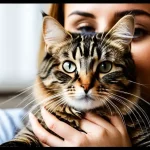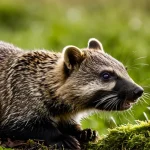Intriguing Behaviors from Familiar UK Wildlife
UK wildlife is full of surprises, especially when it comes to common UK animals. Many species exhibit fascinating animal behavior that can puzzle or delight even experienced observers. For instance, the European robin, often seen as a friendly garden visitor, shows remarkable territorial aggression, defending its space fiercely year-round. This contradicts our usual perception of it as a gentle songbird.
Another example is the hedgehog, known for its nocturnal habits. Its strategy of rolling into a tight ball is widely recognized, but fewer people realize hedgehogs also employ “anointing” behavior. When they encounter new scents, they lick the substance and spread foam on their spines, possibly as a defense mechanism—a behavior surprising even to some wildlife experts.
Also to see : How Are Changing Habitats Impacting Wildlife Distribution in the UK?
Foxes, common in urban and rural UK, demonstrate significant adaptability, including vocal communication that varies by context. Their varied calls can convey warnings or attract mates, showcasing a complex social structure unseen at first glance.
These unexpected wildlife habits illustrate how the natural world around us holds layers of nuanced behaviors deserving closer attention and respect. Appreciating these patterns deepens our connection to common UK animals and their fascinating survival strategies.
In parallel : What are the key challenges in protecting UK marine life?
Remarkable Nightlife: Nocturnal Adaptations
Exploring how creatures thrive when the sun sets
Nocturnal animals UK have developed fascinating adaptations to thrive under the cover of darkness. Fox behavior, for instance, showcases clever use of urban environments for foraging. Foxes often scavenge in residential areas where human activity during the day leaves ample resources behind. Their keen night vision and stealth allow them to navigate cityscapes efficiently, avoiding predators and competition.
Hedgehog habits also reveal remarkable survival strategies. These small mammals frequently partner with badgers—a behavior not widely known—to access hidden food sources. Badgers may disturb soil or leaf litter, making insects and larvae more accessible to hedgehogs. This cooperation exemplifies how nocturnal animals UK improve their chances of survival by working alongside others.
In densely populated areas, nocturnal habits help animals reduce encounters with humans and other predators. By operating at night, foxes and hedgehogs lower the risk of conflict and enhance their ability to find food. These adaptations contribute to the resilience of nocturnal animals UK, proving that darkness offers unique advantages for survival.
Social Structures and Unusual Communication
Understanding the complexities of animal social lives and signals
Badger social behavior in the UK demonstrates remarkable clan organisation. These nocturnal mammals form tight-knit groups called clans, each with distinct boundaries and hierarchies. Grooming rituals play a crucial role, reinforcing bonds and reducing tension within the clan. This social cohesion ensures cooperative foraging and defense strategies.
British bird calls reveal a fascinating use of mimicry for survival. Certain songbirds imitate predator or rival species’ calls as a clever tactic to mislead threats. For example, some orioles and blackbirds adjust their vocal patterns to create confusion, enhancing their chances of avoiding predation. This adaptive communication highlights intelligence and flexibility in British avian species.
Seagulls in the UK have embraced innovative signals when sharing food sources. By combining unique calls and body movements, these seabirds coordinate feeding efforts and warn clan members about available resources. This behavior signifies a dynamic, context-dependent communication system uncommon in many other bird species.
Together, these examples of animal communication UK underline how badger social behavior and varied bird calls contribute to survival. They show how animals adapt communication strategies to complex environmental and social needs.
Hidden Feeding Strategies and Problem Solving
Exploring clever wildlife behavior in everyday settings
Animal feeding habits UK reveal remarkable intelligence, especially in species like crows and magpies. These birds display advanced problem-solving wildlife skills by using tools or even drop hard nuts onto roads for vehicles to crack them open. This clever tactic showcases their adaptability and planning.
Urban pigeons also exhibit surprising intelligence. They have been observed learning to time traffic lights to cross roads safely when food is available. This behavior reflects both their adaptability and an evolving understanding of urban environments, crucial for their survival and access to food.
Even garden birds are not left out. Some species have developed unexpected strategies to avoid human disturbance while feeding, such as waiting patiently when people are nearby or exploiting feeders only at quiet times. These adaptive behaviors demonstrate the incredible ways wildlife adjusts feeding habits in response to human activity.
By understanding these hidden animal feeding habits UK, we gain insights into the fascinating cognitive abilities of local wildlife. Observing these behaviors enriches our appreciation of nature’s ingenuity right in our backyards.
Seasonal Surprises in Migration and Hibernation
Discovering animal migration UK reveals intriguing partial migrations. For example, robins and blackbirds in the UK don’t all migrate; some remain local while others travel south. This partial migration depends on food availability and weather, showcasing how species adapt to environmental changes seasonally.
Hedgehogs’ hibernation behaviors offer a unique survival strategy. Unlike continuous deep hibernators, UK hedgehogs enter a series of lighter torpor phases, periodically waking to drink water. These brief arousals help them manage energy reserves safely, responding to fluctuating winter conditions more flexibly. This surprising seasonal habit is essential for their survival.
Squirrels also adapt their caching behavior based on upcoming weather; they store more food before harsher winters. Observing small changes in squirrel behavior, especially how and when they stash nuts, reveals their intuitive response to seasonal shifts. These subtle yet critical shifts in hibernation behaviors and caching highlight the dynamic survival tactics of UK wildlife during seasonal transitions.
Together, these examples of animal migration UK and hibernation show how species use a range of strategies to thrive through the changing seasons, blending movement and dormancy intelligently.
## Noteworthy Anecdotes and Expert Insights
UK wildlife experts often share memorable anecdotes that reveal surprising aspects of animal behavior studies in the region. For instance, one expert wildlife UK specialist observed that the elusive dormouse, previously thought to be strictly nocturnal, sometimes exhibits daytime activity during unusual weather patterns. This challenges long-held assumptions and enriches credible wildlife facts in the field.
Public contributions have also played a significant role in expanding understanding. Residents reporting unexpected sightings of otters in urban waterways have spurred new research into their adaptive habits. This connection between expert observation and community input helps reshape animal behavior studies with fresh insights.
Scientific findings have recently questioned established beliefs about predator-prey dynamics in UK woodlands. For example, studies noted that foxes may alter hunting strategies seasonally, which sets new directions for interpreting wildlife behavior. These expert wildlife UK updates illustrate the evolving nature of credible wildlife facts, emphasizing ongoing discovery over static knowledge.


